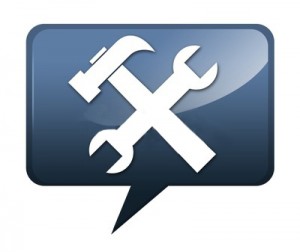
HITECH Act : Economic Stimulus for EMR Adoption
Nitin Chhoda reveals a few ways that the HITECH Act can help a private practice switch to an electronic medical records system using a limited budget. He also shares the requirements needed so that the practice can qualify with the HITECH Act incentives.
 While the HITECH Act may help improve the safety and security of electronic medical records keeping systems, the aspects that clinicians and healthcare providers are excited about is the incentives.
While the HITECH Act may help improve the safety and security of electronic medical records keeping systems, the aspects that clinicians and healthcare providers are excited about is the incentives.
The HITECH Act provides financial encouragement to clinicians, hospitals, and medical practitioners for the “meaningful use” of electronic medical records. A total of $19 billion has been allocated for incentives.
Financial Benefits
There are some great financial benefits to switching to electronic medical records anyway, but the HITECH Act makes things even easier. Physicians could qualify for as much as $44,000 for electronic health record implementation and use over the five years that the Act is funded.
The incentives only apply to the Medicare and Medicaid programs, but they can only get incentives through one program at a time. This means that they can also accrue incentives through one program and then when that runs out, they can accrue the same amount through the other program.
The incentives were also meant to encourage providers to adopt EMR systems for HITECH Act as soon as possible. One deadline was for 2012, and next year the incentives will be lower than they are this year.
And after 2015, medical practices will start to incur penalties if they have not switched to an EMR, starting with a 1% Medicare fee reduction. After 2017, that fee reduction is increased to 3%, an after 2019 the fee reduction will be increased to 5%.
Regional Extension Centers
In addition to financial incentives for adoption of EMR, the HITECH Act also funded 70 regional extension centers that can provide administrative help and guidance for health care providers attempting to make the switch to EMR.
Specifically, these regional extension centers will help “providers select the highest-value option, defined as that which offers the most favorable cost of ownership and operation, including both the initial acquisition of technology, cost and implementation, and ongoing maintenance and predictable needed upgrades over time.”
However, there is no requirement that health care providers use the regional extension centers unless they need help implementing an EMR.
 Qualifying for HITECT Act Incentives
Qualifying for HITECT Act Incentives
The most important requirements for qualifying for HITECH Act incentives for EMR adoption are the proper selection of an EMR system and understanding “meaningful use”.
There are a total of 25 meaningful use criteria, and health care providers must demonstrate 20 out of those 25. Fifteen criteria are pre-determined by the HITECH Act, and out of the final ten, you must choose five. The criteria are measured in three stages over five years.
The first stage of HITECH Act requires that you use a certified EMR system and document set percentages of criteria electronically.
You will also be required to use the reminders and warnings systems that certified EMR systems have, share patient information, and report public health information and quality measures.
The second state of HITECH Act requires that you also send and receive lab results and other information using the EMR.
The third stage of HITECH Act requires that you also enroll patients using public health records, access patient data, improve population health, and report on national high priority conditions. Other criteria may be added in the future.



















